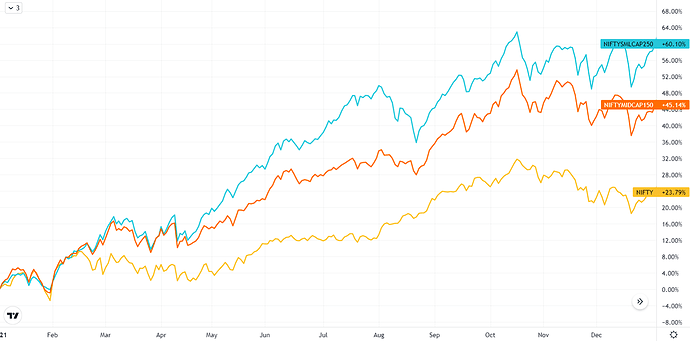S&P Indian published the SPIVA (S&P Indices Versus Active funds) scorecard which compares the performance of actively managed Indian mutual funds with their respective benchmark indices. This report studies the performance of three categories of actively managed equity funds and two categories of actively managed bond funds over the 1, 3, 5, and 10-year periods ending December 2021.
2021 was a good year for Indian equity markets. In the calendar year, Nifty managed to clock returns of around 24% while, Nifty Midcap 150 and Nifty Smallcap 250 were up 45.14% and 60.1% respectively. Though active funds performed better in 2021 compared to 2022, the vast majority of the funds still underperformed their benchmarks. If you zoom our over a 5 and 10-year period, it’s abundantly clear that most active funds are terrible.
-
According to the report released by SPIVA, over the one-year period ended December 2021, 50% of the actively managed funds in the large-cap category were outperformed by S&P BSE 100 Index, in 2020 this number was 80.65%.
-
In the ELSS space, 26.83% of funds underperformed, this number was 65.12% in 2020.
-
Similarly the Mid/SmallCap funds, around 50% of funds managed to beat the benchmark S&P BSE 400 MidSmallcap Index, in 2020 this was around 33.3%.
Year-end 2021:
Year-end 2020:
Taking a deeper dive into the SPIVA report;
Equity Large-Cap Funds: In the calendar year 2021, 50% of the funds underperformed the benchmark, S&P BSE 500 which gave returns of 26.53%. Over the longer horizons, the majority of actively managed large-cap funds have underperformed the benchmark index. Over the 10-year period ending December 2021, about 67.6% of funds underperformed.
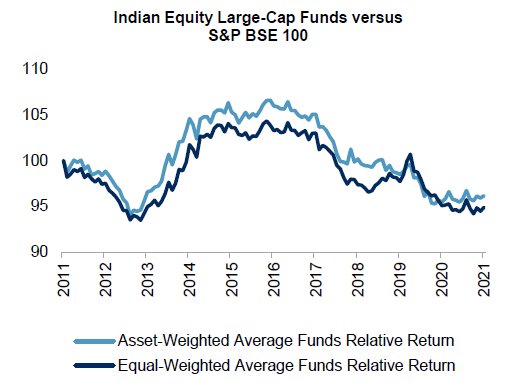
ELSS Funds: ELSS (Equity Linked Savings Schemes) funds fared much better. Over the one-year period ending December 2021, about 73.2% of funds managed to beat the benchmark S&P BSE 200 index, which returned 29.11% over the same period. On a longer-term basis, over the past 3, 5, and 10-year periods ending in December 2021, 63.41%, 79.07%, and 58.33% of funds underperformed the benchmark.
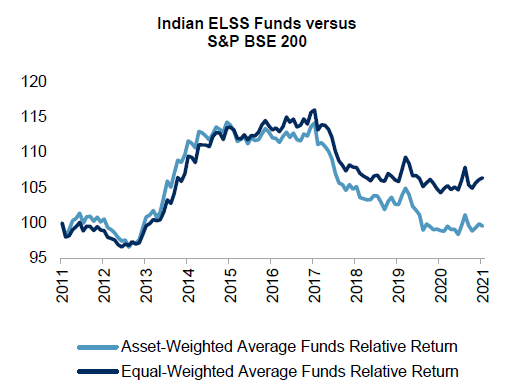
Equity Mid/SmallCap Funds: The S&P BSE 400 MidSmallCap Index was up 51.77% in the year 2021. Over the second half of 2021, 37.25% of the funds underperformed the benchmark. Among all the categories evaluated in the SPIVA India Scorecard, the Mid/SmallCap category fared the best for active funds, with 56.06% of the active funds underperforming the S&P BSE 400 MidSmallCap Index over the 10-year period ending in December 2021.
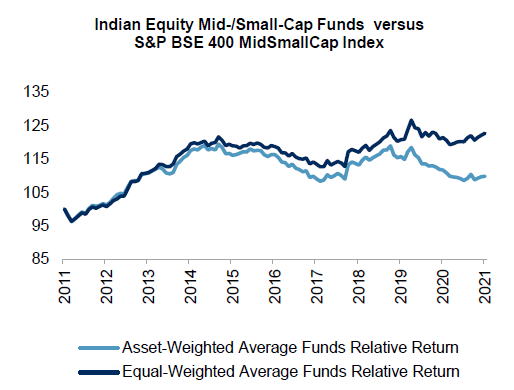
Government Bond Funds: The S&P BSE India Government Bond Index returned 3.54% over the one-year period ending in December 2021. Over the 6-month and 1, 3, 5, and 10-year periods ending in December 2021, 80.77%, 79.17%, 53.85%, 76.19%, and 88.00% of the actively managed funds in this category lagged the benchmark.
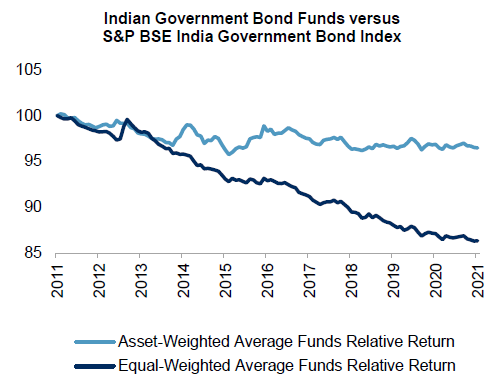
Composite Bond Funds: In the 12-month period ending in December 2021, the S&P BSE India Bond Index gained 3.96%. Across the 3, 5, and 10-year periods ending in December 2021, nearly 90% or more of the funds underperformed the benchmark.
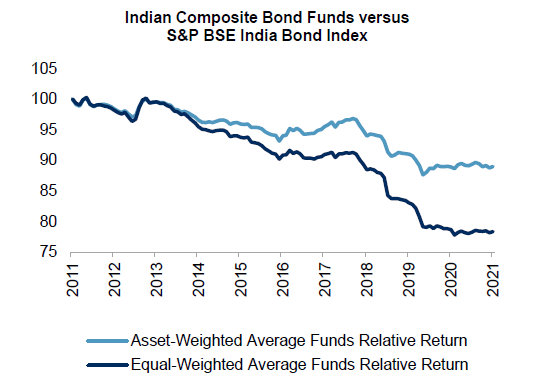
You can read the full report here.
Takeaways
- It makes no sense to invest in active largecap funds anymore. Investors are better off investing in either Nifty 50/Sensex or Nifty 100 index funds or ETFs. The reason is because after the scheme recategorization, SEBI clearly defined the universe for large, mid and smallcap funds. Largecap funds can only invest in the top 100 stocks by marketcap, so it’s very very hard to generate any meaningful alpha.
- Some active funds will always beat the benchmarks, and you’ll only know this in hindsight. It’s very, very hard to identify funds/managers that will beat the benchmark in advance. This is the key reason why index funds and ETFs make a lot of sense.
- As the Indian markets continue to grow and deepen, these numbers will only get worse and worse.
- It’s absolutely clear from the longer term numbers that index funds or ETFs should be the core part of a portfolio. You can always use active funds or smart beta funds as a satellite part of your portfolio to generate some out performance. Check this out for an intro to core and satellite approach to asset allocation.
